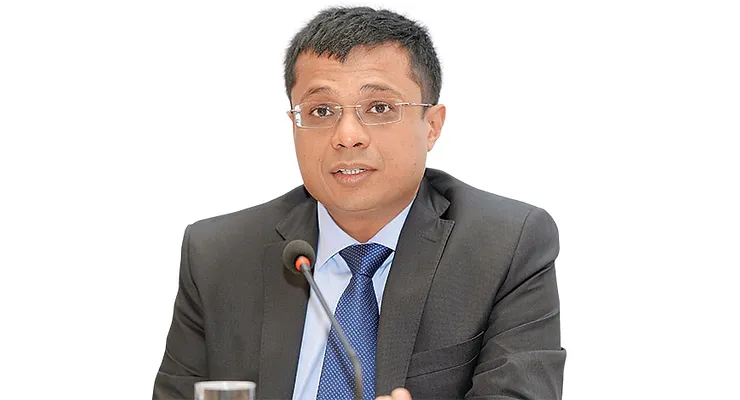Tech World
Unveiling the Success Story of Navi UPI: Achieving 10X Growth in Two Months

Navi Boosts UPI User Engagement with Cashbacks: Will the Momentum Last?
In April, Navi introduced rewards and cashbacks for Unified Payments Interface (UPI) users on its platform. This initiative has been a success, but the company now faces the challenge of sustaining this growth.
Sachin Bansal’s fintech and lending app, Navi, has seen a tenfold increase in UPI payments over the last two months, driven by attractive cashback offers. The platform recorded nearly 30 million UPI transactions in May, a significant jump from the 3 million in March and 15 million in April.
This surge propelled Navi from 27th position among UPI apps in March to 11th in May. Excluding bank apps, Navi ranks seventh. Bansal’s fintech app is now on the verge of surpassing WhatsApp Pay, which reported 36 million transactions in May.
Despite this, an app ranked seventh holds only a 0.2% market share in the UPI ecosystem. Dominant players PhonePe and Google Pay control 87% of the market, with Paytm in third place at just over 8%. The remaining 5% is shared among 70 other UPI apps.
Navi is one of the few UPI apps that still incentivizes regular UPI payments while many competitors have reduced their cashback offerings over the years.
“While our initial momentum has been fueled by our rewards and cashback program, our customers remain loyal because of the fast and reliable user experience. As we progress, we remain dedicated to enhancing every aspect of the customer experience, building differentiated product features, and ensuring users enjoy the benefits of a world-class rewards program,” a Navi spokesperson said in an email statement.
Navi offers a range of services including instant personal loans, home loans, bill payments, insurance, digital gold, and mutual funds. Unlike many fintech apps that act as third-party distributors, Navi manufactures these products, except for bill payments and digital gold.
Kunal Shah’s Cred is another UPI app still offering cashbacks. Cred’s UPI payments tripled over the past year, growing from 45 million in April 2023 to 140 million in May 2024, doubling its market share to 1%.
Sachin Bansal’s UPI Journey
Navi marks Bansal’s second venture into the UPI space, following his efforts at Flipkart in 2016. Flipkart, aiming to drive mobile payments, acquired PhonePe, which was an early adopter of UPI payments. Despite owning PhonePe, Flipkart couldn’t fully leverage its own payment product until PhonePe was spun off in late 2022.
Flipkart launched its UPI payments in beta earlier this year, achieving 5 million transactions in its first month and 4.5 million in May, primarily for e-commerce transactions. This means Bansal is now competing with both PhonePe and Flipkart UPI.
Challenges in Sustaining Momentum
A senior digital banker noted that maintaining growth or even the same transaction volume will be challenging. Cashbacks attract customers initially, but loyalty depends on the app’s user experience. However, this strategy hasn’t always worked, as seen with WhatsApp’s UPI efforts.
WhatsApp promoted UPI payments with cashbacks in June 2022, increasing transactions from 3.48 million in May 2022 to 23 million in June. However, transactions dropped to 6 million in July after cashbacks were reduced, indicating customers’ temporary loyalty for rewards.
To put Navi’s UPI numbers in perspective, Amazon has been processing around 65 million UPI transactions monthly, thanks to consistent cashback rewards.
“The real test for Navi is maintaining momentum once cashbacks dwindle. Unlike Amazon, WhatsApp, or Flipkart, Navi lacks a regular use case, which is a significant challenge,” a fintech consultant commented.
Sustaining initial success and customer loyalty has been tricky even for apps with larger user bases. For instance, Amazon’s transactions fell from over 70 million in 2022 to about 55 million in 2023, before stabilizing at around 65 million monthly in 2024.
Cred has maintained growth in UPI payments by offering gamified experiences and additional services even after reducing cashback values, noted a senior banking executive specializing in digital payments.
Navi’s average transaction value of Rs 340 suggests it is primarily used for merchant payments. For comparison, the average value of a UPI merchant transaction is Rs 632, while personal money transfers average Rs 2,845. About 63% of all UPI transactions are for merchant payments.
PhonePe and Google Pay, which have a higher proportion of personal money transfers, see average transaction values of around Rs 1,500. However, there is no clear trend indicating that apps used more for personal money transfers gain higher customer loyalty.